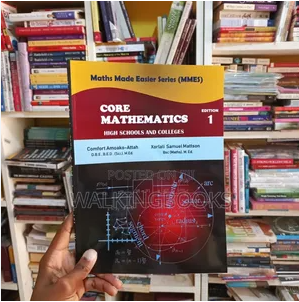Algebra (Year One)

About Course
Course Description:
This Year One Algebra course introduces Senior High School students in Ghana to the fundamental concepts of algebraic reasoning. Students will learn how to use symbols, variables, and equations to represent mathematical relationships and solve problems. The course builds a solid foundation for higher-level mathematics by exploring topics such as algebraic expressions, linear equations, inequalities, and simple word problems. Emphasis is placed on problem-solving, logical thinking, and real-life applications relevant to the Ghanaian curriculum.
Course Objectives:
By the end of this course, students will be able to:
-
Understand and use basic algebraic terms and symbols.
-
Simplify and evaluate algebraic expressions.
-
Solve simple linear equations and inequalities.
-
Apply algebraic reasoning to real-world problems.
-
Develop confidence in manipulating numbers and symbols.
Course Content
Algebra – Senior High School Year One (Core Mathematics)
-
Alebra Test Questions